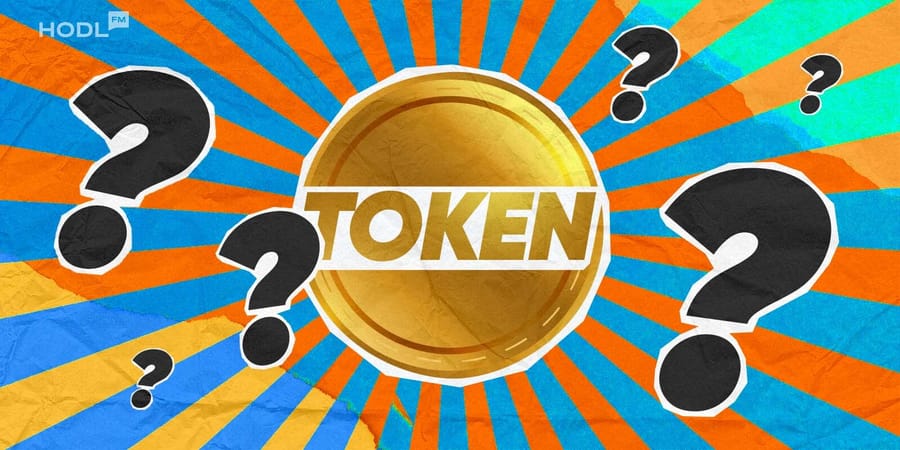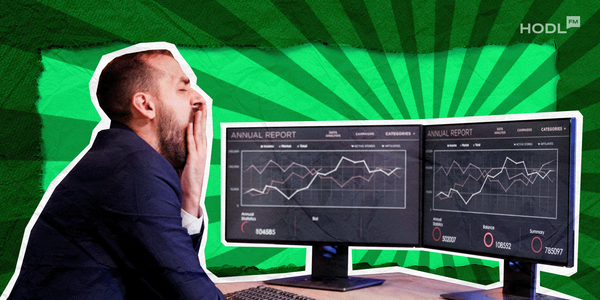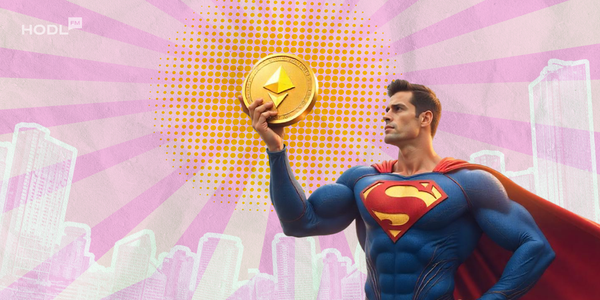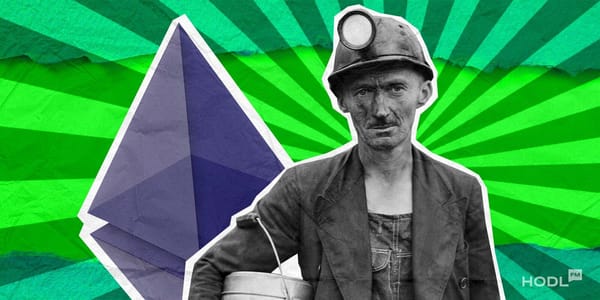“Tokens are backed by nothing. It’s a pyramid scheme. Otherwise, where would all that money come from? When you make money on tokens, you’re just taking it from someone else. “
You’ve probably heard these arguments from skeptical friends or relatives. And each time, you weren’t quite sure how to answer. If that sounds familiar, this article is for you.
We break it down what tokens really are, how they work, coin vs token difference, and why they even exist.
What is a token?
A token is a digital asset built on top of an existing blockchain. Bitcoin and Ether, by contrast, are coins that have their own independent networks.
For example, the Ethereum blockchain serves as a base layer for thousands of tokens, such as USDT (Tether), UNI (Uniswap), and LINK (Chainlink).
What makes tokens special is how easy they are to create. Thanks to smart contracts, anyone can launch a token without building a new blockchain from scratch.
Just imagine! Around 48,249 new cryptocurrencies were created in the last 24 hours, according to CoinMarketCap. In total, the platform now tracks over 25.28 million of them.
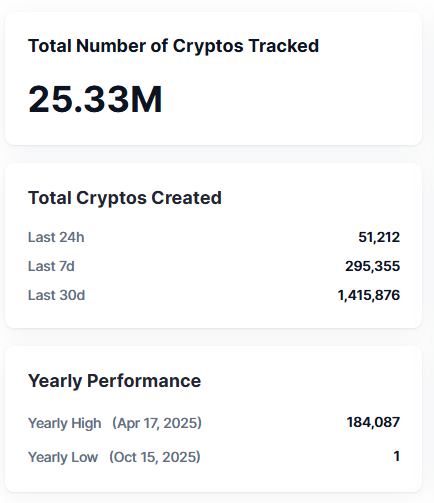
Now, let’s look at Pump.fun, a Solana-based platform for creating tokens. Yesterday, 11,913 tokens were launched. However, only 67 graduated. “Graduated” means meeting Pump.fun’s criteria for market capitalization and investor interest, and moving to a traditional DEX.

Coin vs token vs cryptocurrency
People often mix up words "coin," "token," and "cryptocurrency", but there's a key difference:
A coin is the native currency of its blockchain. Bitcoin (BTC) runs on the Bitcoin network, Ether (ETH) on Ethereum, and Solana (SOL) on Solana. Cryptocoins primarily act as money: they enable payments, transfers, and store value within their networks.
A token is built on top of another blockchain. Tokens represent something else: ownership, access, rights, or value in a specific application. For instance, RAY, GMT, and BONK all exist on Solana.
Cryptocurrency is the broad term covering both coins and tokens.
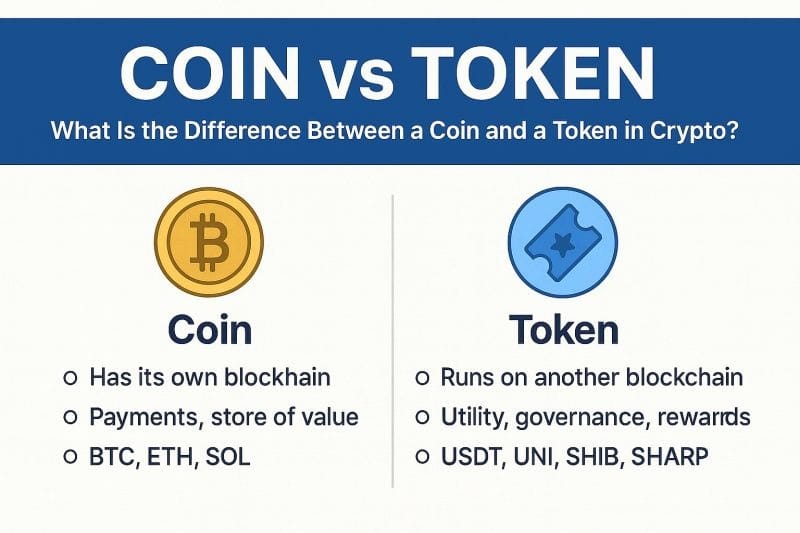
Token technology explained
A smart contract is a program that operates on the blockchain. It works automatically based on simple “if–then” rules. For example: If Elizabeth sends 1 ETH, then give her 100 tokens.
A token isn’t a physical object. It’s just data managed by that smart contract. Each crypto token is an entry in the contract’s record showing who owns what.
When you “send” tokens, you’re not moving coins from one place to another. You’re asking the smart contract to update its ownership record. The blockchain then confirms and saves that change permanently.
To make sure all tokens can work with wallets and exchanges, developers follow something called a token standard — a common set of coding rules.
This standard defines what every token’s smart contract must include, such as how to check balances or transfer tokens.
For example:
- ERC-20 — used for regular (fungible) tokens
- ERC-721 — used for NFTs
- BEP-20 — Binance’s version of ERC-20
- TRC-20 — for tokens on the Tron network
- SPL — Solana’s standard for high-speed, low-cost transactions
How to create a token
Developers can use pre-built templates from open-source libraries like OpenZeppelin, set the parameters (name, symbol, total supply), and deploy the contract on a blockchain.
Creating a token takes minutes. Platforms like Pump.fun on Solana have made it possible for even a kid.
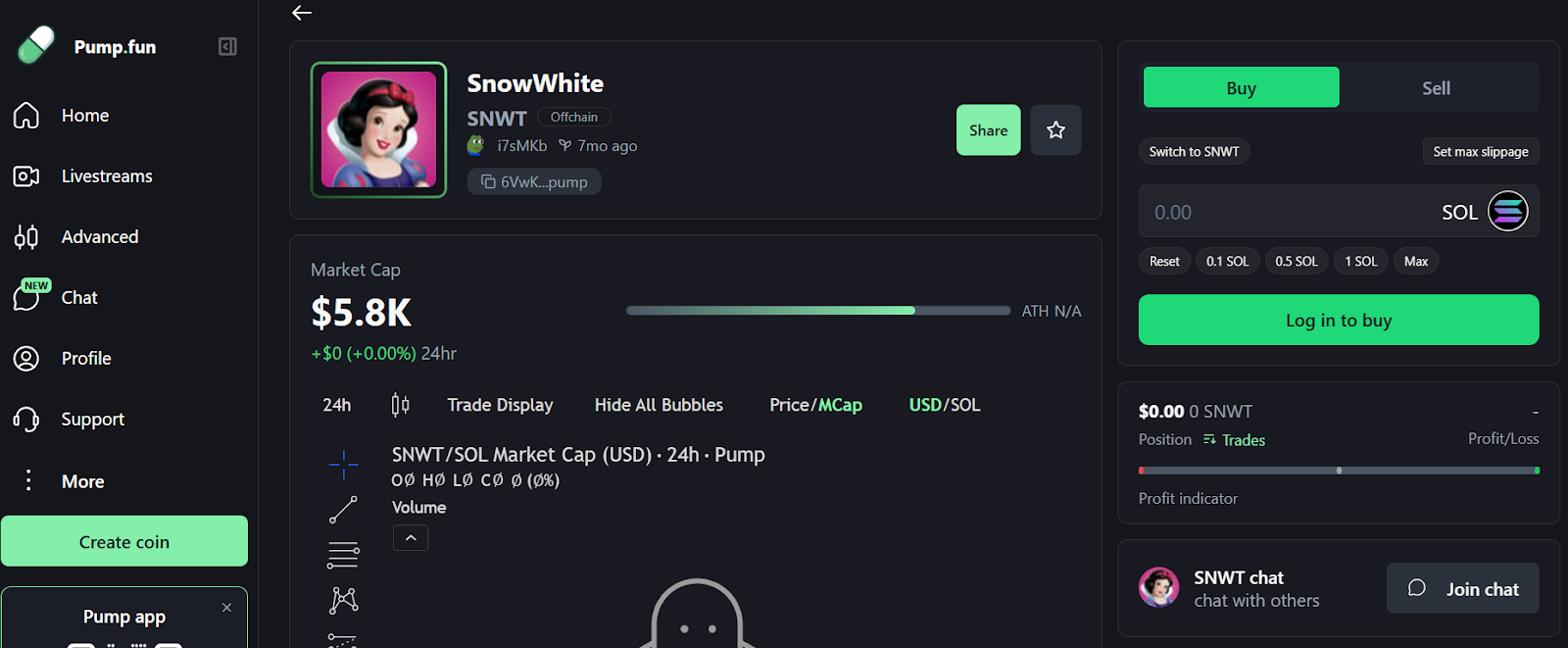
What gives tokens value
Many traditional economists like Warren Buffett and Nassim Taleb argue that tokens are backed by nothing.
Technically, that’s true. Most aren’t backed by gold, oil, or physical assets. However, they do have value, and it comes from three core factors: utility, scarcity, and trust. Just like traditional money.
The U.S. dollar, for example, has not been backed by gold since 1971. It has value because people trust it and use it every day. The same idea applies to crypto. But here, trust is placed in code and mathematics rather than in governments. For example:
- USDT is pegged to the U.S. dollar and used across almost every exchange.
- FIL (Filecoin) is used to pay for data storage services on the decentralized Filecoin network.
- SAND has value in The Sandbox metaverse because it’s the token used to buy, sell, and trade virtual land, assets, and other in-game items.
There's a stereotype that token trading, like a casino, is a zero-sum game where we only earn money because others lose it. But that’s only true for so-called shitcoins.
Token-based projects can create value through network growth and innovation. When a blockchain project expands its user base, functionality, or real-world applications, demand for its tokens can rise organically. In the next chapter, we'll explore what value tokens can actually represent.
The main types of tokens
1. Utility tokens
Utility tokens are digital assets that are used to pay for transactions, activate premium features within a blockchain service or product. Look at some examples:
- BAT (Basic Attention Token) — rewards users for viewing ads in the Brave browser.
- SAND (The Sandbox) — tokens with you can buy land and items in a virtual world.
- FIL (Filecoin) — pays for decentralized data storage.
By the way, stablecoins are also a type of utility token. They are designed to maintain a stable value, usually pegged to fiat currencies like the U.S. dollar (e.g., USDT, USDC, DAI).
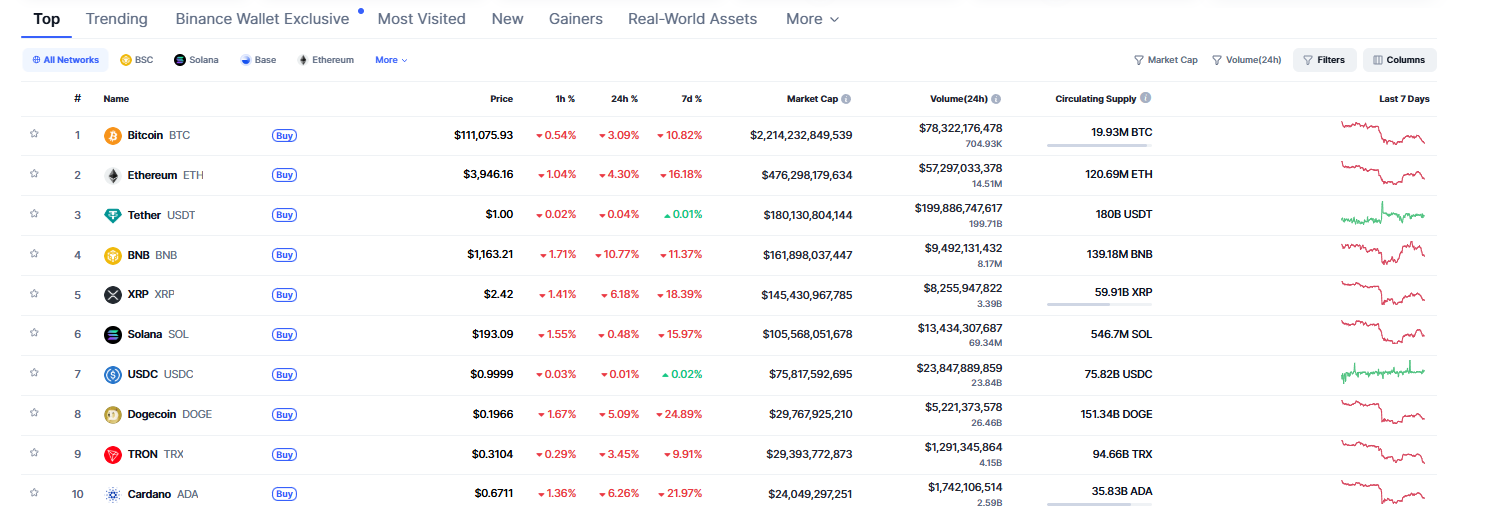
In the list of top cryptocurrencies by market capitalization, there are two stablecoins, USDT and USDC. USDT currently ranks third.
2. Governance tokens
Holding governance tokens means having a say in how a decentralized project evolves. The more tokens you hold, the stronger your vote.
You may think: “Who cares? I just want to earn, not vote.”
But decisions made through governance often affect profits directly, such as adjusting lending rates or reward structures.
In 2022, COMP (Compound) holders voted to lower rewards for users supplying stablecoins, which changed how liquidity moved on the platform.
AAVE token holders also voted to pause borrowing of volatile assets during a market crash, helping protect the protocol and keep token prices stable.
3. Security tokens
Security tokens are the equivalent of stocks in the traditional financial market. They represent ownership of real assets, company shares, real estate, or funds, but exist in tokenized form. They must comply with regulations like the SEC in the U.S. or MiCA in the EU.
Here are some projects that have such type of tokens:
- tZERO is a platform where company shares are turned into tokens and traded.
- Polymath (POLY) helps companies create and manage security tokens that follow legal rules.
- RealT allows investors to buy small portions of U.S. real estate as tokens.
It is security tokens that enable the tokenization of real-world assets. It makes assets more accessible and liquid. Instead of needing $100,000 to buy property, you can own a $50 fraction. And unlike traditional shares, tokenized assets can be transferred globally in minutes.
Prypco, the Dubai-based tokenization platform, has already sold two tokenized real estate properties. The first property was sold in under 24 hours, and the second property was sold in just under 2 minutes.

4. Non-fungible tokens (NFTs)
NFTs are digital certificates of ownership for unique items: art, collectibles, music, in-game assets, or event tickets. They are called non-fungible because each one is distinct and can’t be exchanged 1:1 like regular crypto.
Beyond art hype, NFTs have growing real-world utility:
- Bored Ape Yacht Club (BAYC) gives access to private events and communities.
- VeeFriends acts as a conference pass and community membership.
- Nike’s .SWOOSH NFTs link to limited-edition digital and physical sneakers.

How tokens are used in practice
Now, let’s move from theory to practical applications of tokens. Some of these uses reflect the types of tokens.
Payments
Stablecoins like USDT or USDC let you send money worldwide in seconds without banks. They’re widely accepted in trading, DeFi, and cross-border payments. Some companies even pay salaries in stablecoins.
Staking
Many blockchains allow you to “stake” tokens — lock them into the network to earn interest or help secure the system. It’s similar to making a deposit in a bank.
Governance
Token holders can vote on upgrades, reward rates, or new product launches, shaping the project’s future.
Access
Some projects use tokens as entry passes — to unlock features, communities, or premium content (like BAYC events or DAO memberships).
Trading
And finally, the most well-known and popular way to use tokens. Tokens can be bought, sold, and swapped on exchanges. Many people trade tokens to profit from price changes, though this comes with significant risk.
How not to lose money on worthless tokens
Tokens that don’t have real utility are likely to collapse. Out of nearly 7 million cryptocurrencies listed on GeckoTerminal since 2021, about 3.7 million have failed — over half in total.
Many exist only to enrich creators at investors' expense. One of the most common crypto scams is a rug pull, when developers drain all liquidity and make your tokens impossible to sell.
To stay safe from such tokens, watch out for red flags: anonymous teams, unrealistic promises, no actual utility, aggressive hype, and concentrated ownership.
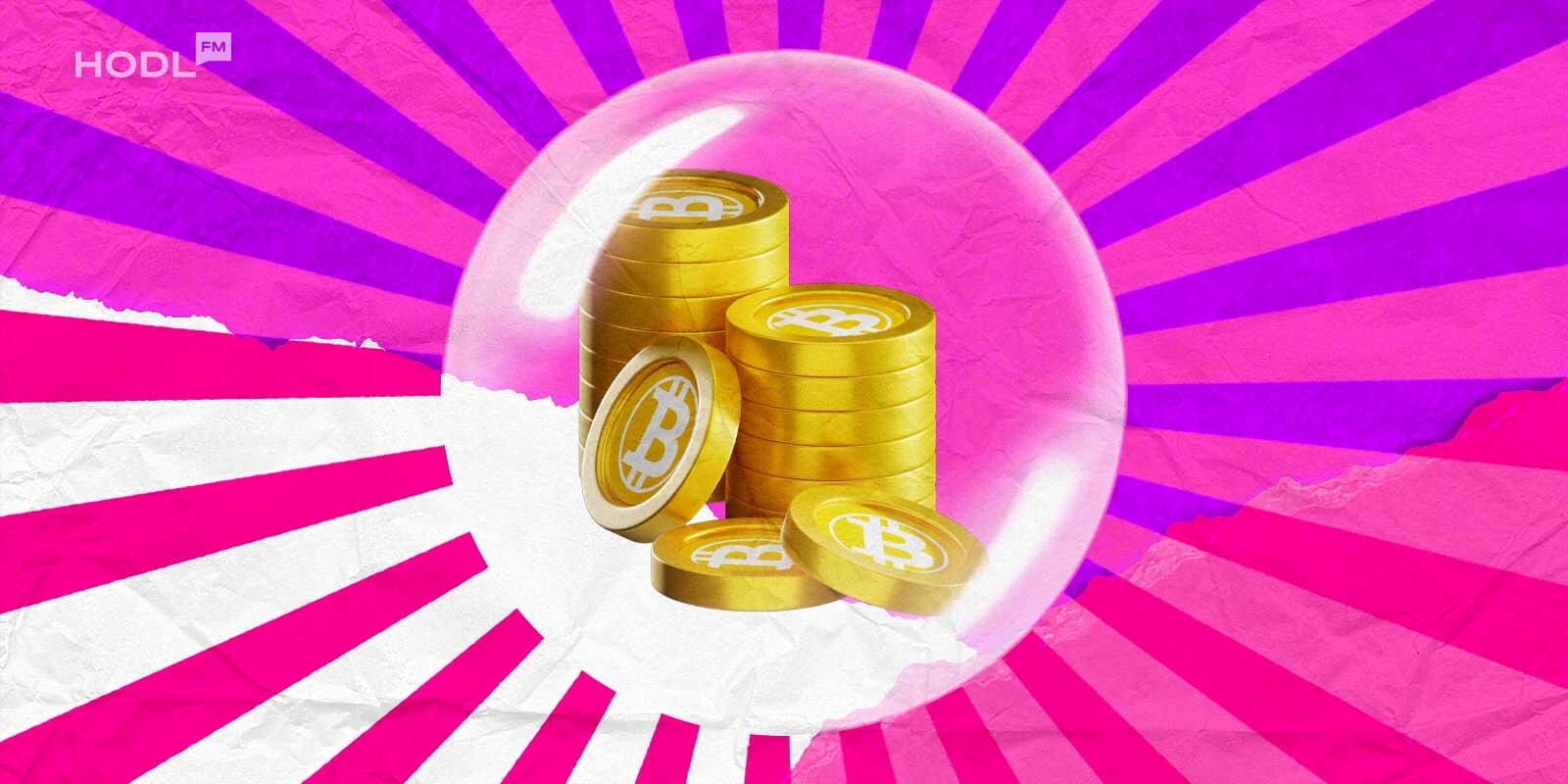
Disclaimer: All materials on this site are for informational purposes only. None of the material should be interpreted as investment advice. Please note that despite the nature of much of the material created and hosted on this website, HODL FM is not a financial reference resource, and the opinions of authors and other contributors are their own and should not be taken as financial advice. If you require advice. HODL FM strongly recommends contacting a qualified industry professional.
